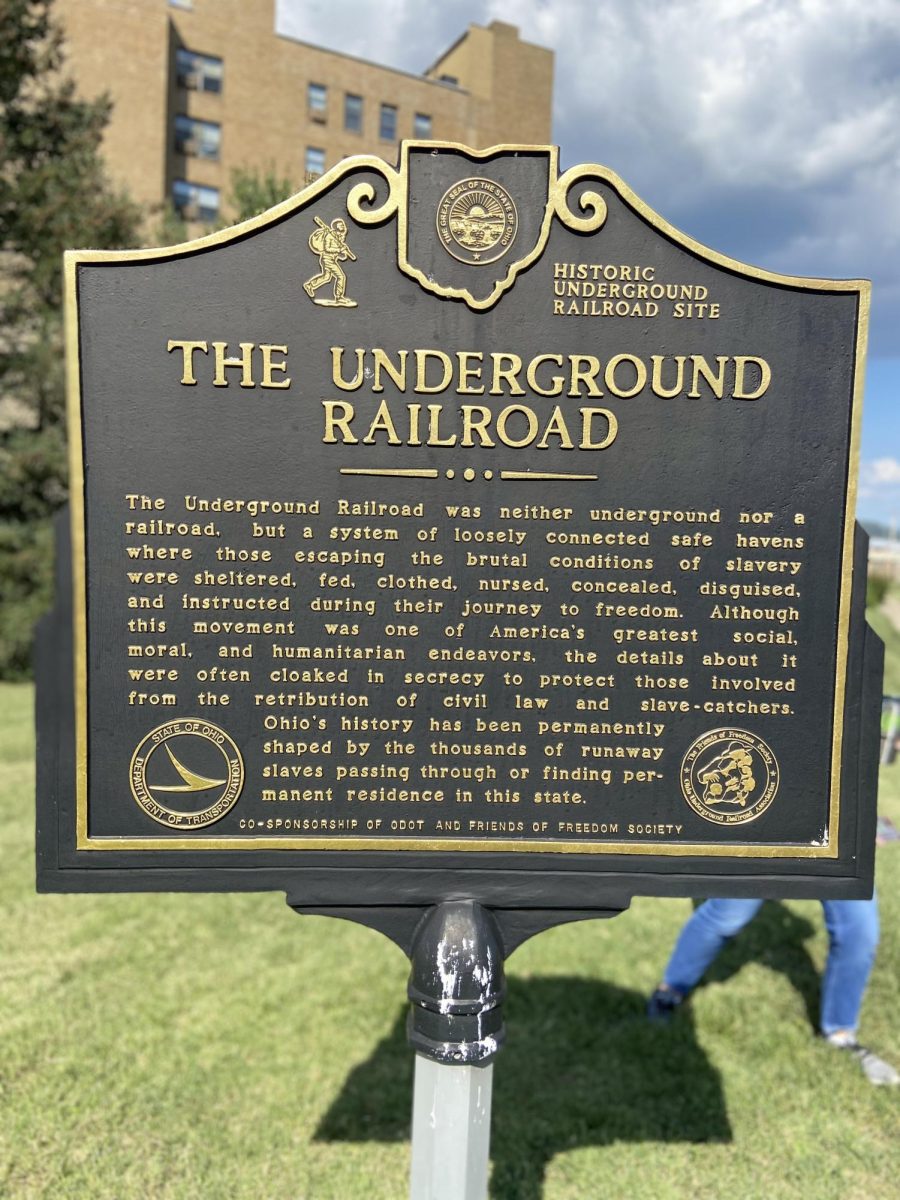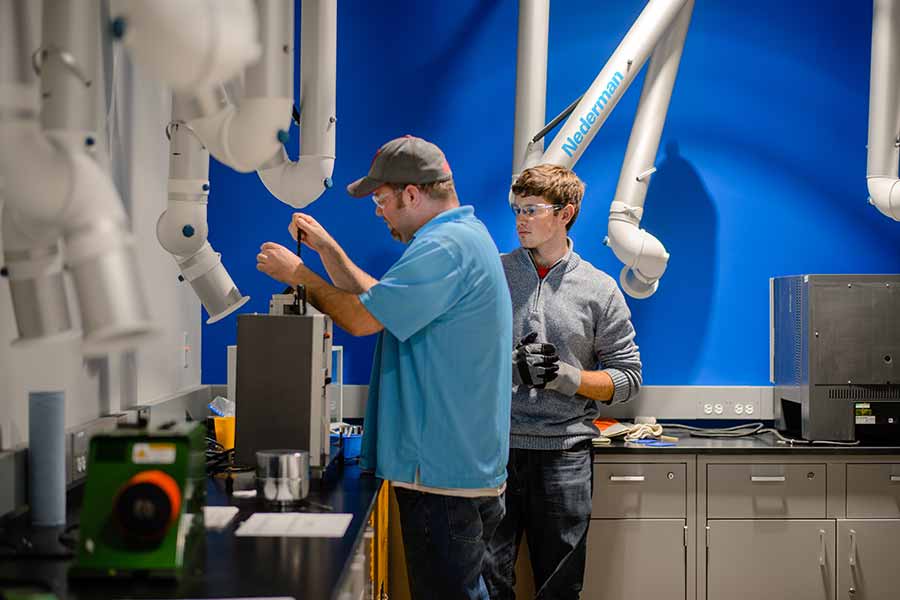Dr. Andrew Feight, professor of history at Shawnee State University, led a walking tour of local sites connected to the Underground Railroad on Sept. 22 as part of the three-day Documenting Portsmouth symposium. As part of the tour, Feight explained the history of Portsmouth’s First Presbyterian Church, John J. Minor’s barber shop (now Tootsie’s), Milton Kennedy’s Feed Store and City Hall (now Odd Fellows) and the house of Sam Houston (now Patties and Pints).
“Local history is a great way to connect with students and get them interested in history,” Feight said. “… makes it seem more real.”
The First Presbyterian Church has two small rooms underneath the stairs on opposite ends of the lobby. There, freedom seekers would hide and receive care, learning how to look and act like free men and women.
Minor’s barbershop was another stop for freedom seekers. With the help of his wife Martha, Minor would help fellow Black people escape servitude.
It’s somewhat unclear whether freedom seekers actually passed through the doors of Kennedy’s Feed Store and City Hall. However, there was definitely communication to help freedom seekers going through, according to records of an interview with Minor.
Houston came from a founding family in Portsmouth and provided resources to James Ashley, who would play a pivotal role in the emancipation process. Ashley, after having a falling out with his father who believed the Bible supported slavery, moved in with Houston and his family. Through his study of the law books the Houstons owned, Ashley came to author the 13th Amendment of the U.S. Constitution, which would ultimately abolish slavery in the United States.
More information about local connections to the Underground Railroad and abolition movement is available in the Center for Public History, which opened in Room 123 of SSU’s Clark Memorial Library last year. With donations from the Appalachian Regional Commission, Feight has been working through the center to help preserve Portsmouth’s history.
The locations on the tour are among those being considered for historical markers as part of a three-year initiative funded by the Appalachian Regional Commission. With only 27 sites across nine counties in the tri-state area to be nominated for historical protection by the National Park Service, few can be picked from Portsmouth alone. However, that doesn’t mask the city’s rich historical background in helping enslaved people reach freedom.
All of these places can be seen today as the modern buildings they are. For more history on these places, visit https://sciotohistorical.org or download the Scioto Historical app.











